Table Of Contents:
- Introduction to NFTs in Emerging Markets:
- NFTs – A Global Phenomenon:
- Why NFTs Are Booming in Emerging Economies:
- Regional Spotlight on Emerging NFT Markets:
- Key Trends Driving NFT Adoption in Emerging Markets:
- Challenges Facing NFT Expansion in Emerging Economies:
- Regulatory Uncertainty – Navigating the Legal Maze:
- Accessibility Issues – Bridging the Digital Divide:
- Market Volatility – Riding the Roller Coaster:
- Environmental Concerns – Going Green:
- Security Risks – Protecting Digital Assets:
- Skepticism and Misunderstanding – Changing Perceptions:
- Infrastructure Limitations – Building the Foundation:
- Cultural Barriers – Aligning with Local Values:
- Financial Barriers – Overcoming Economic Hurdles:
- Legal Protection Ensuring Rights and Ownership:
- Conclusion – Navigating the NFT Landscape:
- Investor and Trader Opportunities in Emerging Markets:
- Case Studies – NFT Success Stories from Emerging Economies:
- The Future of NFTs in Emerging Markets:
- Navigating the NFT Landscape in Emerging Markets:
- Frequently Asked Questions (FAQs) on NFT Trading in Emerging Markets:
- Q1. What exactly are NFTs, and how do they work?
- Q2. Why are NFTs gaining popularity in emerging markets?
- Q3. What are the main challenges facing NFT adoption in these regions?
- Q4. How can investors and traders capitalize on NFT opportunities in emerging markets?
- Q5. Are there any success stories of NFT adoption in emerging economies?
- Q6. What does the future hold for NFTs in these regions?
Introduction to NFTs in Emerging Markets:
Hey there! Let's dive into the fascinating world of NFTs and explore why emerging markets are becoming the new hotspots for this digital revolution.

What Are NFTs, and Why Do They Matter?
So, why should we care about NFTs? Well, they have revolutionized the concept of ownership in the digital realm. Artists can monetize their work directly, gamers can truly own in-game items, and collectors can hold verifiable digital assets. This shift has opened up new avenues for creativity, investment, and commerce, making NFTs a significant player in the digital economy.
Why Emerging Markets Are the New Frontier for NFT Growth?
Now, let's talk about why emerging markets are becoming the new frontier for NFTs. It's an exciting development, and here's why:
- Increased Accessibility to Technology: With the proliferation of smartphones and improved internet connectivity, more people in emerging markets have access to digital platforms. This accessibility allows artists, creators, and entrepreneurs to participate in the NFT ecosystem without the need for traditional intermediaries.
- Youthful Demographics: Many emerging economies boast a young, tech-savvy population eager to adopt new technologies. This demographic is more open to exploring digital assets, making NFTs a natural fit.
- Economic Opportunities: NFTs provide new income streams for creators in regions where traditional economic opportunities may be limited. By tapping into global markets, artists and developers can reach audiences far beyond their local communities.
- Cultural Expression: Emerging markets are rich in cultural heritage, and NFTs offer a platform to showcase this diversity on a global stage. From digital art reflecting local traditions to music NFTs featuring regional sounds, there's a growing appetite for unique cultural content.
- Supportive Communities: The decentralized nature of NFTs fosters the creation of supportive communities that transcend borders. These communities provide resources, education, and collaboration opportunities, further driving adoption in emerging markets.
In conclusion, NFTs are not just a trend; they're reshaping the digital landscape. Emerging markets, with their unique blend of technological adoption, youthful demographics, and rich cultural heritage, are poised to lead the next wave of NFT growth. Whether you're an investor, creator, or simply an enthusiast, keeping an eye on these regions could offer valuable insights into the future of digital assets.
NFTs – A Global Phenomenon:
The world of NFTs has taken the digital and investment landscapes by storm. From multi-million dollar sales of digital art to the rise of virtual real estate, NFTs are no longer just a niche trend: they're a global movement. Let’s break it down.
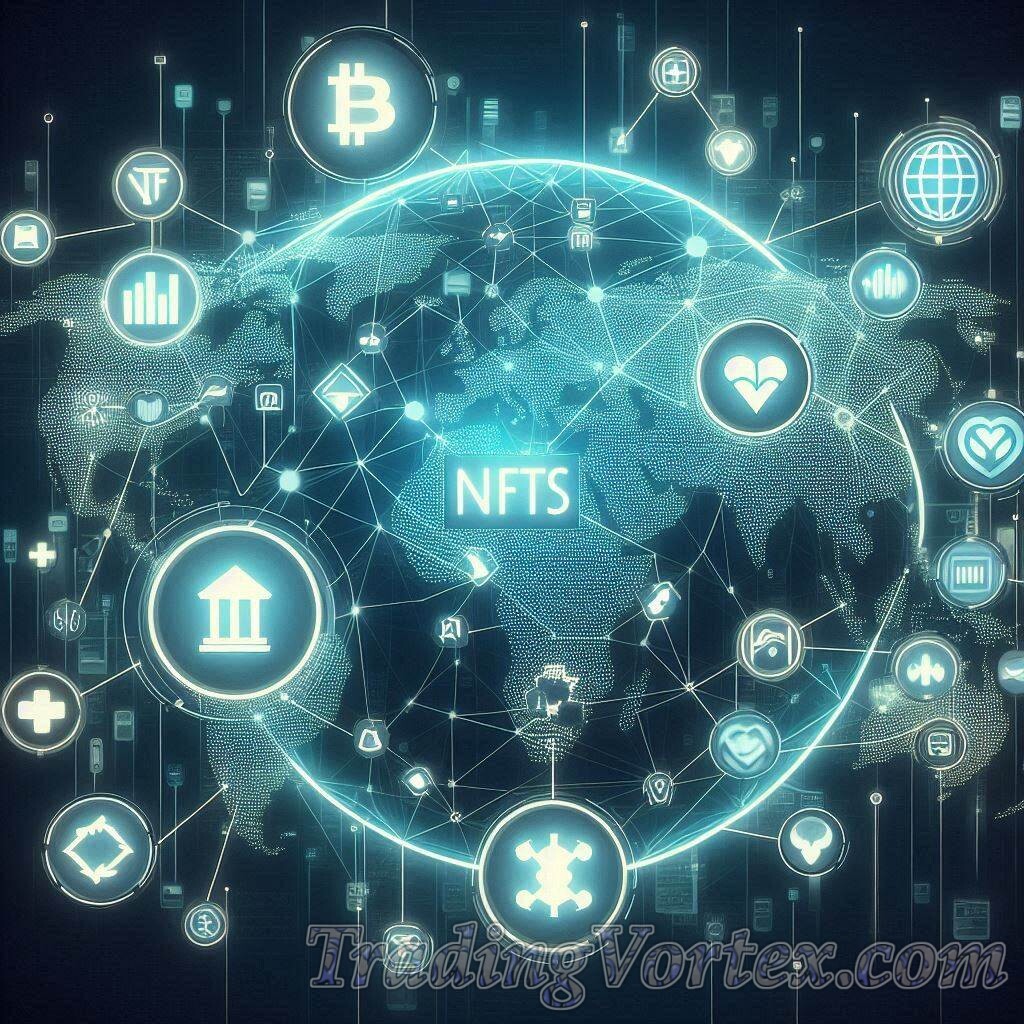
What Are Non-Fungible Tokens? A Simple Guide:
At their essence, NFTs, or Non-Fungible Tokens, are unique digital assets verified and secured by blockchain technology. Unlike cryptocurrencies such as Bitcoin or Ethereum, which are interchangeable and identical, NFTs are one-of-a-kind. Each token is tied to a specific digital or physical item – be it art, music, collectibles, or even gaming assets – making it verifiably unique.
Think of NFTs like owning an autographed limited-edition item. You don’t just own the asset; you also have proof that it’s authentic and uniquely yours. The blockchain ensures transparency and security, recording every transaction and making counterfeiting virtually impossible.
But what makes NFTs even more exciting is their ability to empower creators and collectors. For the first time, digital artists, musicians, and even video game developers can monetize their work without relying on traditional intermediaries. Meanwhile, collectors gain access to a vibrant marketplace where rare digital assets can be bought, sold, and showcased.
Global NFT Trends – Key Insights and Stats:
The rise of NFTs has been nothing short of meteoric. In 2023, the global NFT market was valued at approximately $27.31 billion, and it’s projected to grow to a staggering $264.6 billion by 2032, with an annual growth rate of 28.7%. This rapid expansion is fueled by their adoption across industries such as gaming, art, music, and real estate.
- NFTs in Gaming: Platforms like Axie Infinity have made headlines for creating play-to-earn ecosystems where players can earn real-world value through gaming. Blockchain-based games alone attracted 1.9 million new daily wallets in Q2 2024, signaling strong user engagement and adoption.
- Art and Collectibles: Digital art continues to dominate the NFT space, with platforms like OpenSea hosting collections worth millions of dollars. Artists from around the globe are leveraging NFTs to bypass traditional gatekeepers and sell directly to buyers.
- The Challenges: Like any emerging market, NFTs have faced growing pains. In Q2 2024, hacks and exploits led to losses of around $407 million, showcasing the importance of robust security measures. While this was a decline from previous quarters, it’s a reminder that the NFT market is not without its risks.
Why NFTs Are More Than Just a Trend:
What sets NFTs apart is their ability to redefine ownership in the digital age. They’ve created a bridge between creators and consumers, enabling global trade without the need for traditional intermediaries. Moreover, their versatility across industries – from entertainment and fashion to education and real estate – means that NFTs aren’t confined to one niche.
For investors, the global adoption of NFTs presents exciting opportunities. With emerging markets like Southeast Asia, Africa, and the Middle East entering the scene, NFTs are poised to go from a global phenomenon to a truly universal asset class.
Whether you're a trader seeking high-potential investments or someone simply curious about this digital revolution, one thing is clear: NFTs are here to stay, and their impact on the global economy is just beginning to unfold.
Why NFTs Are Booming in Emerging Economies:
Imagine a bustling marketplace where digital art, virtual real estate, and unique collectibles are traded with the same fervor as traditional assets. This vibrant scene isn't just unfolding in tech hubs like Silicon Valley; it's gaining remarkable momentum in emerging economies. Let's explore why NFTs are experiencing such a boom in these regions.
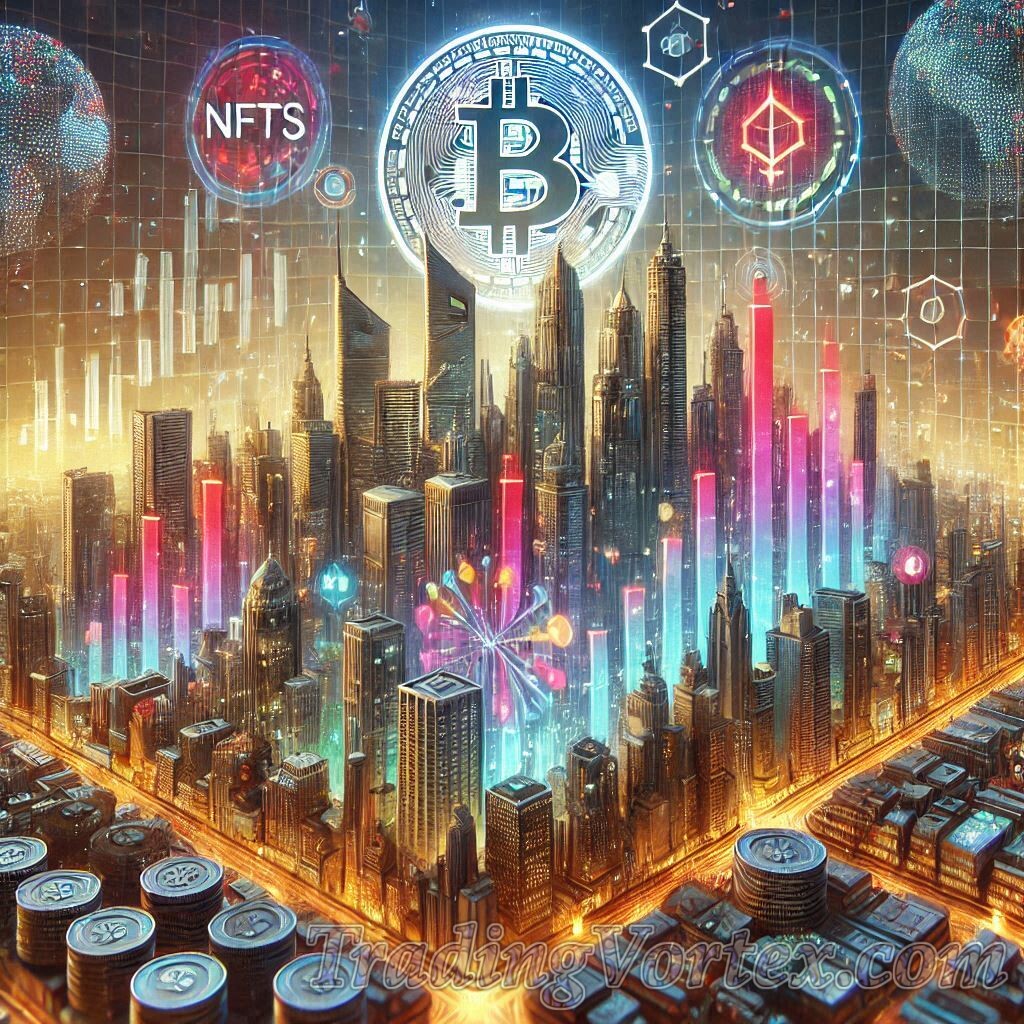
The Key Drivers of NFT Adoption in Emerging Markets:
Economic Opportunities and Financial Inclusion:
In many developing regions, traditional financial systems can be restrictive, leaving large segments of the population unbanked or underbanked. NFTs, built on blockchain technology, offer an accessible entry point into the global digital economy. Individuals can create, buy, and sell digital assets without the need for conventional banking infrastructure, fostering financial inclusion and providing new income streams.
Youthful Demographics and Digital Savviness:
Emerging markets often boast a young, tech-savvy population eager to engage with new digital trends. This demographic is quick to adopt innovative technologies, and NFTs align perfectly with their digital-first mindset, blending creativity with entrepreneurship.
Cultural Expression and Global Reach:
NFTs enable artists and creators from diverse backgrounds to showcase their work on a global stage, bypassing traditional gatekeepers in the art and entertainment industries. This democratization allows for unique cultural expressions to gain international recognition and monetization.
Unique Factors Fueling NFT Growth in Developing Regions:
Mobile Connectivity and Internet Penetration:
The proliferation of smartphones and improved internet access have been pivotal in NFT adoption. With mobile devices as primary tools for internet access, individuals can easily participate in NFT marketplaces, creating and trading digital assets from virtually anywhere.
Government Initiatives and Regulatory Support:
Some emerging economies are proactively exploring blockchain technology and its applications, including NFTs. Supportive regulatory frameworks and government initiatives aimed at fostering digital innovation can accelerate NFT adoption by providing a conducive environment for growth.
Community Building and Social Engagement:
NFTs thrive on community participation. In regions with strong communal ties, the collaborative nature of NFTs – where creators and collectors interact directly – resonates deeply, fostering a sense of belonging and shared purpose.
Conclusion:
The surge of NFTs in emerging economies is more than a fleeting trend; it's a testament to the transformative power of digital assets in creating inclusive economic opportunities. By leveraging technology, creativity, and community, individuals in these regions are not only participating in but also shaping the future of the global digital economy.
Regional Spotlight on Emerging NFT Markets:
NFTs are transforming the digital economy, creating unique opportunities across the globe, particularly in emerging markets. From Africa’s creativity-driven adoption to the Middle East’s blend of tradition and innovation, and Southeast Asia’s tech-savvy enthusiasm, each region brings its own flair and dynamics to the NFT space. Let’s delve deeper into how these markets are shaping the future of NFTs.
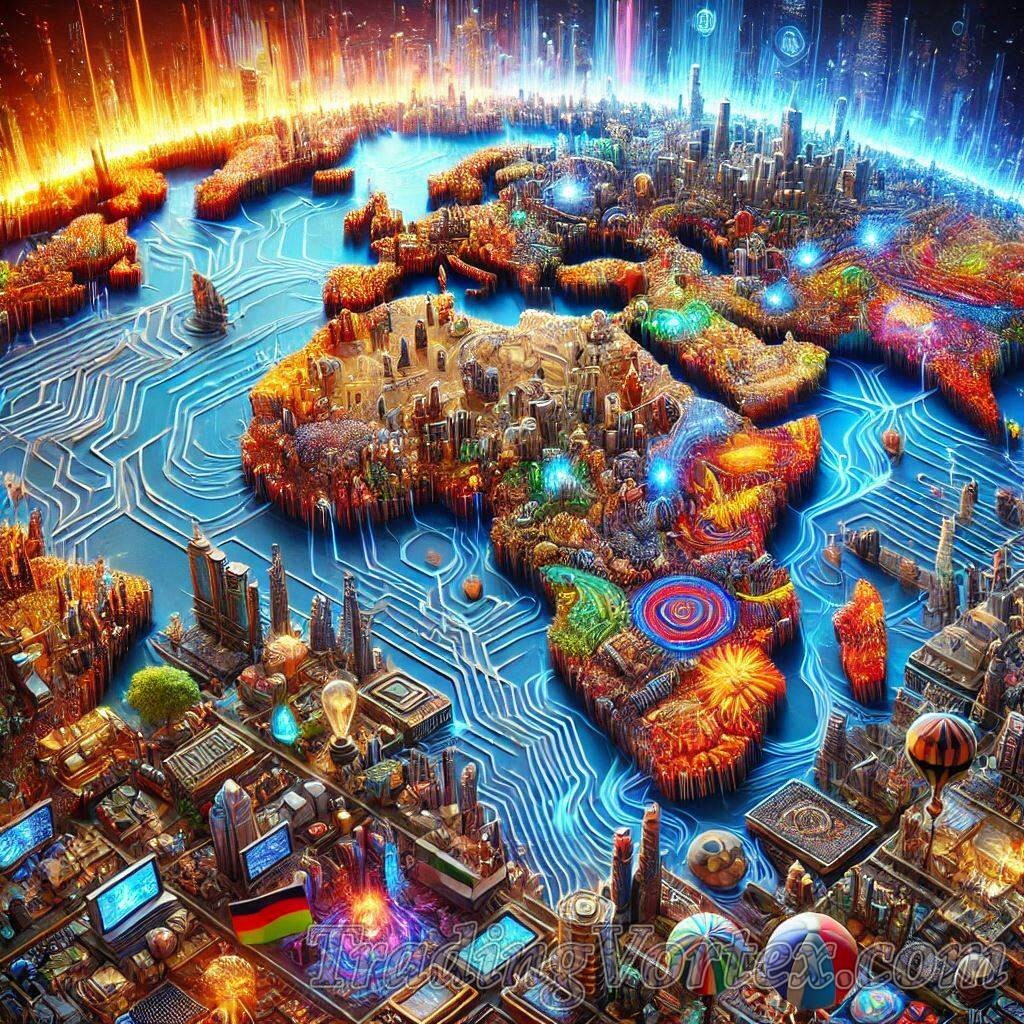
Africa – A Hub for Creativity and Innovation:
Africa’s growing presence in the NFT space highlights its potential as a creative powerhouse. With a vibrant mix of cultures, young entrepreneurs, and untapped markets, the continent is turning challenges into opportunities in the digital economy.
NFT Market Growth in Africa – Key Stats and Projections:
Africa’s NFT ecosystem is rapidly expanding, supported by increasing smartphone adoption and improved internet connectivity. While exact regional data remains sparse, global projections estimate the NFT market to hit $264.6 billion by 2032, with Africa playing a significant role in this growth. The continent’s unique blend of innovation and resourcefulness has paved the way for local artists and entrepreneurs to tap into the global NFT market.
Spotlight on African NFT Artists, Platforms, and Projects:
African artists are leveraging NFTs to connect with global audiences, breaking barriers imposed by traditional art markets. Notable figures include:
- Anthony Azekwoh (Nigeria): Known for his distinctive digital art, Anthony’s work has gained international recognition through NFT platforms.
- Adewale Mayowa (Nigeria): Adewale’s bold and culturally rich pieces have become iconic in the NFT world, spotlighting African heritage.
- Osinachi: Often referred to as one of Africa's most prominent NFT creators, his works explore themes of identity and societal norms.
Platforms such as Mojatatu and Africarare, Africa’s first virtual reality metaverse, provide a space for creators to showcase their work, while also attracting NFT collectors from across the globe.
Overcoming Challenges – Infrastructure and Awareness:
Despite its potential, Africa faces obstacles in scaling its NFT market. Limited internet penetration, high transaction fees, and a lack of widespread education about blockchain technology pose significant challenges. However, initiatives are emerging to address these gaps:
- Internet Access Initiatives: Companies like Starlink are improving connectivity in rural areas, enabling broader access to digital platforms.
- Educational Programs: Organizations like Blockchain Nigeria User Group are working to demystify blockchain and NFT concepts, fostering broader adoption.
The Middle East – Merging Tradition with Innovation:
The Middle East stands out for its ability to integrate its rich cultural heritage with cutting-edge blockchain technologies. From government-backed initiatives to culturally inspired NFT collections, the region is becoming a focal point in the NFT ecosystem.
The Growing Role of NFTs in Middle Eastern Economies:
The Middle East’s NFT market has gained substantial momentum, contributing to a 27.1% CAGR in the region's blockchain industry from 2024 to 2030. Countries like the UAE and Saudi Arabia are at the forefront, leveraging blockchain technology to diversify their economies and boost innovation.
Government Support and Cultural Influence on NFT Adoption:
Governments in the Middle East are increasingly embracing NFTs as part of their digital transformation strategies. For example:
- UAE: Dubai launched the Dubai Metaverse Strategy, which aims to create over 40,000 jobs and add $4 billion to the economy by 2030, with NFTs being a key component.
- Saudi Arabia: The country has partnered with NFT platforms to preserve and promote its cultural heritage through digital art.
Cultural festivals and exhibitions, such as Art Dubai, have also embraced NFTs, featuring digital artists and showcasing blockchain-based art as part of their programs.
Regional Success Stories and Market Trends:
The Middle East is home to several success stories in the NFT realm:
- Crypto Arabs: An educational NFT project aimed at demystifying blockchain for the Arab world, while also promoting local talent.
- Hala Al-Abdallah (Saudi Arabia): A digital artist whose work blends traditional Islamic art with modern digital techniques, earning acclaim in the NFT space.
Southeast Asia – A Leader in NFT Adoption:
Southeast Asia is arguably the fastest-growing NFT market globally, thanks to its young population, widespread mobile internet usage, and entrepreneurial spirit.
Why Southeast Asia Is Embracing NFTs Faster Than Most Regions:
The region’s adoption of NFTs is driven by its digitally native population, where 70% of internet users are under 35. Countries like Thailand, the Philippines, and Vietnam have become hotspots for NFT activities, with gamers, artists, and entrepreneurs driving demand.
Popular NFT Categories – Gaming, Art, and Beyond:
Gaming leads the charge in Southeast Asia’s NFT market, with blockchain-based games like Axie Infinity creating play-to-earn ecosystems that resonate with millions. Key NFT categories include:
- Gaming NFTs: Play-to-earn games dominate, especially in the Philippines, where Axie Infinity became a major source of income during the pandemic.
- Digital Art: Platforms like Foundation and Rarible host a growing number of Southeast Asian artists.
- Virtual Real Estate: Digital land ownership is gaining traction, with users purchasing and developing plots in metaverses like Decentraland.
Navigating Regulations and Market Challenges:
While Southeast Asia is enthusiastic about NFTs, the regulatory landscape is still evolving. Challenges include:
- Regulatory Ambiguity: Countries like Vietnam have no clear framework for taxing or regulating NFTs, creating uncertainty for investors.
- Scams and Fraud: The lack of regulation has also led to an increase in fraudulent activities, highlighting the need for user education and platform accountability.
Despite these hurdles, governments in the region are starting to take action. For instance, Thailand has established a task force to study the implications of NFTs and blockchain on its economy, paving the way for clearer regulations.
Conclusion:
Emerging markets are not just participants in the NFT revolution – they’re driving it. From Africa’s creative explosion to the Middle East’s cultural and governmental support, and Southeast Asia’s tech-driven enthusiasm, these regions are transforming the global NFT landscape. With a mix of innovation, culture, and resilience, they’re proving that the future of NFTs isn’t limited to traditional tech hubs. Instead, it’s being shaped by the vibrant energy of the world’s emerging economies.
Key Trends Driving NFT Adoption in Emerging Markets:
NFTs are no longer a niche technology: they’re creating seismic shifts in how emerging markets interact with art, gaming, and digital finance. Let’s dive into the key trends shaping this transformative movement and why these regions are at the forefront of NFT adoption.
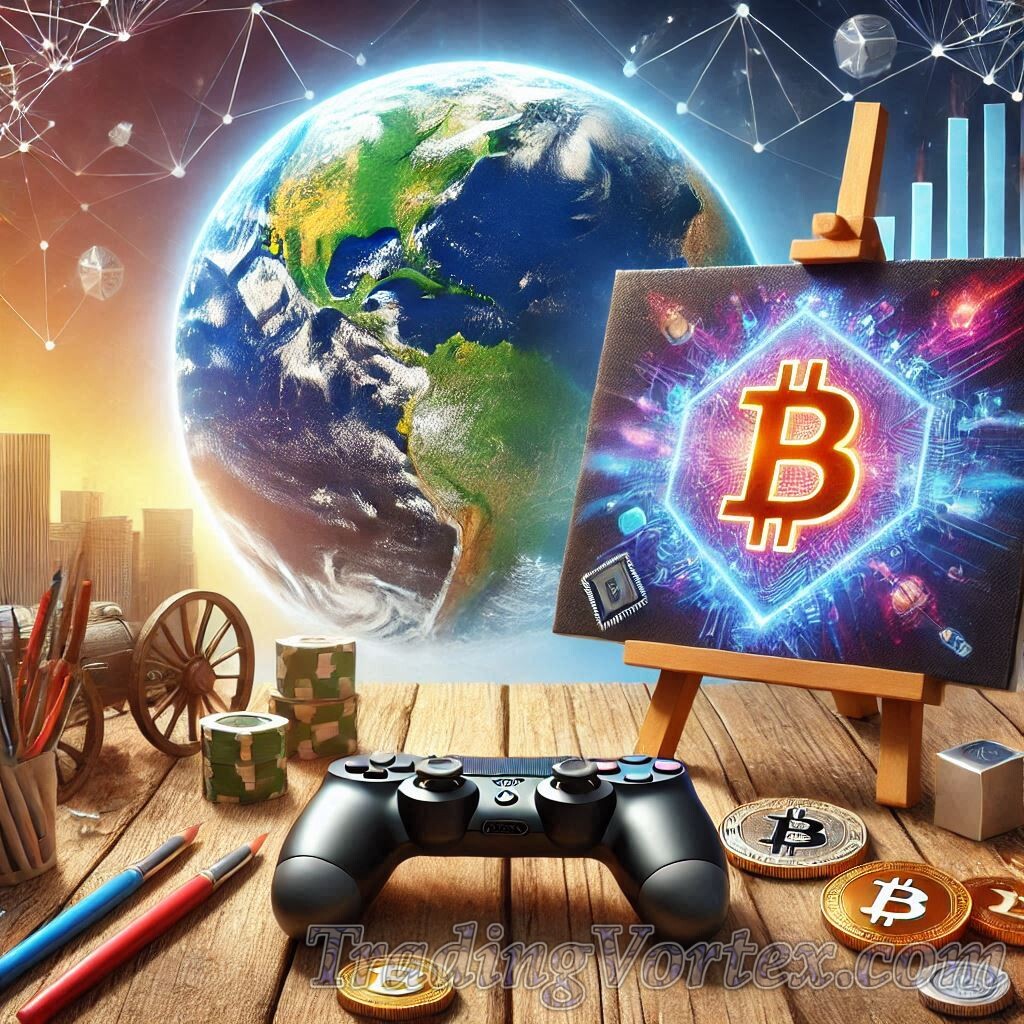
The Rise of NFT Gaming and Play-to-Earn (P2E) Models:
In many emerging markets, play-to-earn (P2E) games have become more than just entertainment – they’re providing viable income streams for millions. This model allows players to earn cryptocurrency and NFTs by participating in games, offering a unique intersection of fun and finance.
How P2E Is Changing Lives:
In countries like the Philippines, Vietnam, and Brazil, games such as Axie Infinity have turned into life-changing opportunities. During the height of the COVID-19 pandemic, players used their earnings to pay bills, buy groceries, and even fund education. Axie Infinity alone saw players earning between $200 and $1,000 monthly, depending on their skill and time investment.
However, P2E games aren’t without their challenges. The upfront cost to start playing can be steep, with an Axie NFT costing hundreds of dollars. This led to the creation of scholarship programs, where established players lend NFTs to newcomers in exchange for a share of their earnings, fostering community-driven growth and inclusivity.
Market Trends and Projections:
- Market Valuation: The global P2E NFT market is expected to grow from $1.35 billion in 2024 to $6.32 billion by 2032, with a CAGR of 21.3%.
- Blockchain Gaming Dominance: Blockchain gaming accounted for over 45% of all blockchain activity in 2024, underscoring the sector’s role in driving NFT adoption.
- Popular Titles: Beyond Axie Infinity, games like Gods Unchained, The Sandbox, and Illuvium are gaining traction in these regions.
The P2E model represents a shift in how value is created and distributed, particularly in markets where traditional employment opportunities may be limited.
NFTs as Cultural and Artistic Expressions:
NFTs have empowered artists from emerging markets to bypass traditional gatekeepers like galleries and auction houses. This has led to an explosion of creativity, with digital art, music, and even literature finding new life on blockchain platforms.
Empowering Local Artists:
- Global Reach: Platforms like OpenSea, Foundation, and Rarible allow artists from Africa, Southeast Asia, and Latin America to reach international buyers, something previously unimaginable in traditional markets.
- Celebrating Cultural Heritage: Artists use NFTs to preserve and celebrate their heritage. For example, African artists integrate traditional motifs into digital art, while Latin American creators highlight indigenous stories and themes.
Success Stories:
- Osinachi (Nigeria): Known for his striking digital art, Osinachi has become one of Africa’s most successful NFT artists, selling pieces for thousands of dollars on platforms like SuperRare.
- LatamDAO (Latin America): This decentralized community supports Latin American creators by providing resources and a marketplace to showcase their work.
NFTs are also democratizing access to art ownership. Fractional NFTs allow buyers to own a portion of high-value works, making the market more inclusive.
Cryptocurrency Accessibility and Its Role in NFT Transactions:
Cryptocurrency is the lifeblood of NFT transactions. In emerging markets, where traditional banking systems often fail to reach the masses, crypto provides an alternative path to financial inclusion.
Why Crypto Accessibility Matters:
- Banking the Unbanked: In regions where many lack access to traditional financial services, mobile-based crypto wallets like Trust Wallet and MetaMask enable users to buy, sell, and trade NFTs.
- Lower Transaction Costs: Blockchain transactions often bypass the high fees associated with traditional banking, making them more affordable for users in low-income areas.
- Cross-Border Opportunities: Crypto allows creators and traders to participate in global markets without being restricted by currency conversion or local banking limitations.
The Role of Stablecoins:
Stablecoins like USDT and USDC are particularly crucial in emerging markets. Their price stability makes them a preferred medium for NFT transactions, shielding users from the volatility of other cryptocurrencies like Bitcoin or Ethereum.
Educational Efforts and Adoption Growth:
- Crypto Education Programs: Organizations like Binance Academy and regional blockchain communities are educating users about the basics of crypto and NFT trading.
- Partnerships: Local governments and private companies are increasingly exploring partnerships with crypto platforms to promote financial literacy.
The Influence of Social Media and Community Engagement:
One cannot overlook the role of social media in driving NFT adoption. Platforms like Twitter (X.com), Discord, and Telegram are central to NFT culture, serving as hubs for education, promotion, and community building.
Building Communities:
- Localized Communities: Groups like Blockchain Nigeria User Group or Philippine Blockchain Week focus on fostering local engagement and spreading awareness about NFTs.
- Social Influencers: Creators and collectors with large followings help demystify NFTs, encouraging more people to explore the space.
Viral Success Stories:
Social media amplifies stories of creators who have “made it big” in the NFT world, inspiring others to participate. Viral campaigns like Bored Ape Yacht Club’s exclusivity model have been particularly effective in attracting high-profile investors in both developed and emerging markets.
Conclusion:
The key trends driving NFT adoption in emerging markets – play-to-earn gaming, cultural and artistic innovation, and cryptocurrency accessibility – are reshaping how these regions engage with the global digital economy. By combining creativity, technology, and community-driven efforts, emerging markets are not only catching up but are poised to lead the next wave of NFT innovation.
Challenges Facing NFT Expansion in Emerging Economies:
While NFTs are making waves in emerging markets, it's not all smooth sailing. Let's explore some of the hurdles these regions face and how they're navigating them.

Regulatory Uncertainty – Navigating the Legal Maze:
Imagine trying to play a game without knowing the rules – that's the current state of NFT regulation in many emerging economies. The legal landscape is still evolving, and this uncertainty can make both creators and investors hesitant.
- Evolving Laws: In countries like India and Nigeria, the lack of clear regulations means that NFT transactions might not be recognized legally, leading to potential disputes.
- Government Stance: Some governments are still figuring out how to classify NFTs – are they assets, commodities, or something else? This ambiguity can affect taxation and ownership rights.
Accessibility Issues – Bridging the Digital Divide:
Not everyone in emerging markets has access to the internet or the latest tech. This digital divide can limit who can participate in the NFT space.
- Internet Access: In rural areas, reliable internet is a luxury. Without it, engaging with NFTs becomes a challenge.
- Tech Literacy: Understanding blockchain and NFTs requires a certain level of tech know-how. Without proper education and resources, many are left out of the conversation.
Market Volatility – Riding the Roller Coaster:
NFTs can be a wild ride. The market's ups and downs can be especially tough for those new to the game.
- Price Fluctuations: NFT values can swing dramatically. For someone just starting out, this volatility can be daunting.
- Speculative Nature: Many NFTs are bought with the hope of selling them at a higher price. This speculative approach can lead to bubbles and crashes, affecting both creators and investors.
Environmental Concerns – Going Green:
The environmental impact of NFTs, especially those on energy-intensive blockchains, is a growing concern.
- Energy Consumption: Some NFT platforms use blockchains that consume a lot of energy, raising sustainability questions.
- Eco-Friendly Alternatives: There's a push towards using more sustainable blockchains, but adoption is still in the early stages.
Security Risks – Protecting Digital Assets:
With the rise of NFTs, there's also an increase in cyber threats.
- Hacking Threats: NFT platforms can be targets for hackers, risking users' investments.
- Scams and Fraud: The NFT space has seen its share of scams, from fake listings to phishing attacks, making it crucial for users to stay vigilant.
Skepticism and Misunderstanding – Changing Perceptions:
Not everyone is sold on NFTs. Some view them as a passing trend or a risky investment.
- Public Perception: There's skepticism about the real value of NFTs, with some seeing them as speculative assets rather than genuine collectibles.
- Educational Gaps: A lack of understanding about how NFTs work can lead to misconceptions and missed opportunities.
Infrastructure Limitations – Building the Foundation:
For NFTs to thrive, robust infrastructure is essential.
- Payment Systems: In many emerging markets, traditional banking systems are underdeveloped, making it hard to buy or sell NFTs.
- Platform Development: There's a need for user-friendly platforms tailored to local needs and languages to encourage wider adoption.
Cultural Barriers – Aligning with Local Values:
NFTs are a global phenomenon, but they need to resonate locally.
- Cultural Relevance: NFTs that don't align with local cultures or interests may struggle to gain traction.
- Content Creation: Encouraging local artists to create NFTs requires understanding and support for their unique styles and stories.
Financial Barriers – Overcoming Economic Hurdles:
Economic factors can limit participation in the NFT market.
- High Entry Costs: The initial investment for creating or purchasing NFTs can be prohibitive for many.
- Economic Instability: In regions with unstable economies, spending on digital assets like NFTs can be seen as a luxury.
Legal Protection Ensuring Rights and Ownership:
Protecting digital assets is crucial.
- Intellectual Property: Ensuring that creators' rights are upheld in the NFT space is vital to encourage more artists to participate.
- Dispute Resolution: Clear legal frameworks are needed to resolve conflicts over NFT ownership and authenticity.
Conclusion – Navigating the NFT Landscape:
While NFTs offer exciting opportunities in emerging markets, it's essential to recognize and address these challenges. By understanding these hurdles, stakeholders can work towards creating a more inclusive, secure, and sustainable NFT ecosystem.
Investor and Trader Opportunities in Emerging Markets:
Diving into the world of NFTs in emerging markets? Buckle up, because there's a treasure trove of opportunities waiting for savvy investors and traders. Let's explore how you can navigate this dynamic landscape.
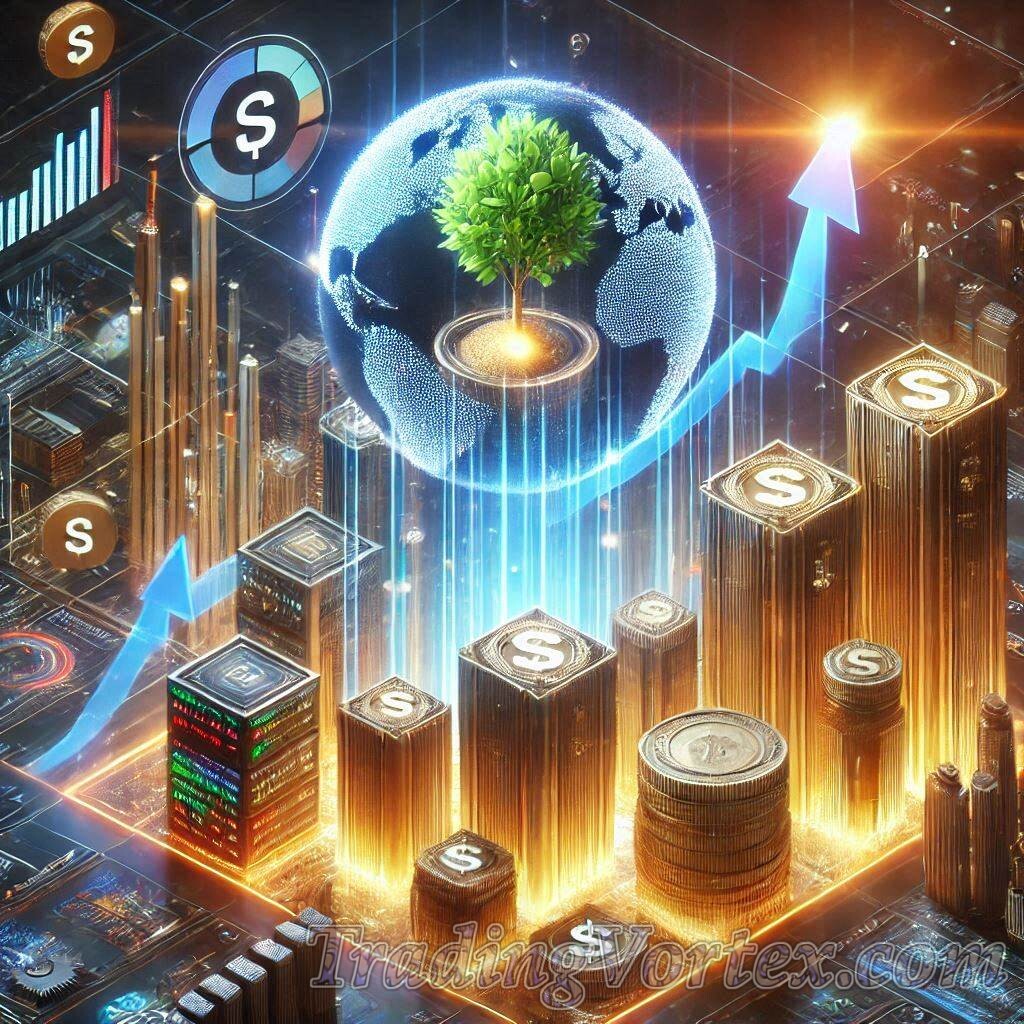
High-Growth Sectors in the NFT Ecosystem:
NFTs aren't just about digital art; they're revolutionizing various industries. Here are some sectors in emerging markets where NFTs are making waves:
- Gaming: NFTs are transforming the gaming industry by enabling players to own, trade, and monetize in-game assets. This shift is creating new revenue streams and enhancing player engagement.
- Music and Entertainment: Artists are leveraging NFTs to tokenize their work, offering fans exclusive content and experiences. This model empowers creators and provides fans with unique collectibles.
- Real Estate: NFTs are being used to represent ownership of physical properties, streamlining transactions and reducing paperwork. This innovation is particularly beneficial in regions with complex property laws.
- Healthcare: NFTs can securely store and share medical records, ensuring privacy and accessibility. This application is especially relevant in emerging markets with limited healthcare infrastructure.
Best Practices for Investing in NFTs in Emerging Markets:
Investing in NFTs requires a strategic approach, especially in emerging markets. Here are some tips to guide you:
- Conduct Thorough Research: Before investing, understand the project's fundamentals, the team behind it, and its roadmap. Platforms like Rarity.tools can help assess the rarity and potential value of NFTs.
- Diversify Your Portfolio: Don't put all your eggs in one basket. Spread your investments across different sectors and types of NFTs to mitigate risks.
- Stay Informed: The NFT space is rapidly evolving. Regularly follow reputable sources and communities to stay updated on trends and opportunities.
- Understand the Risks: NFT markets can be volatile. Invest only what you can afford to lose and be prepared for market fluctuations.
Long-Term Potential: How to Identify Promising Projects?
Spotting a diamond in the rough requires keen observation. Here's how you can identify promising NFT projects:
- Evaluate the Team: A strong, transparent, and experienced team is crucial. Look for teams with a proven track record in blockchain or related industries.
- Assess Community Engagement: A vibrant, active community often indicates a project's credibility and potential for growth.
- Examine Use Cases: NFTs with real-world applications or utility beyond mere collectibles tend to have more staying power.
- Check for Partnerships: Collaborations with established brands or platforms can validate a project's legitimacy and open doors to wider adoption.
Conclusion:
The NFT landscape in emerging markets is rich with opportunities for those willing to explore and invest wisely. By focusing on high-growth sectors, adhering to best investment practices, and identifying promising projects, you can position yourself for success in this exciting digital frontier.
Case Studies – NFT Success Stories from Emerging Economies:
The NFT world isn't just a playground for tech giants and celebrities; it's also a vibrant arena where emerging economies are making their mark. Let's explore some standout success stories that highlight the innovative spirit and potential of NFTs in these regions.
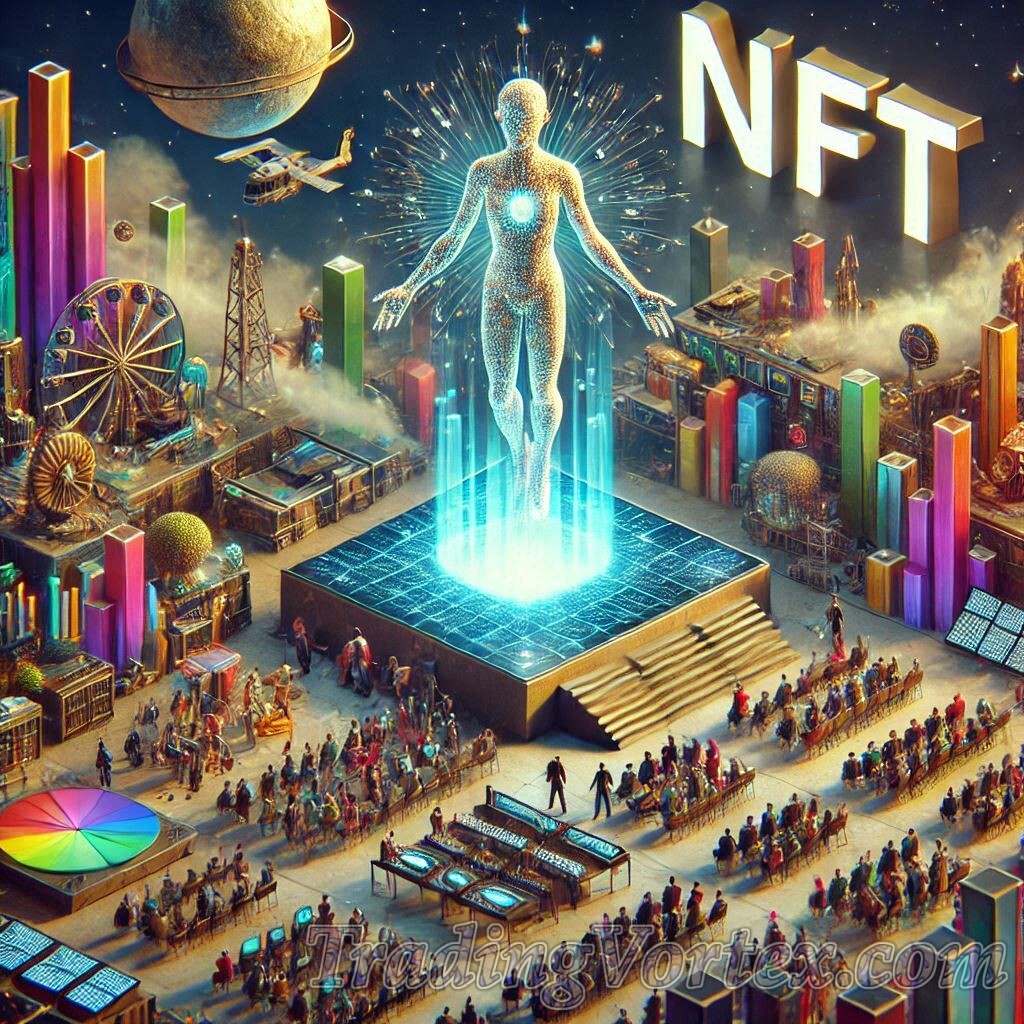
Examples of Local NFT Platforms and Projects Making Waves:
- Rtfkt Studios (Fashion and Digital Wearables): Founded in 2020, Rtfkt Studios quickly became a trailblazer in the NFT fashion space. They merged sneaker culture, gaming, and digital fashion, creating virtual sneakers and avatars that resonated with a global audience. In 2021, Nike acquired Rtfkt, underscoring the brand's impact. However, despite early success, Rtfkt announced plans to cease operations by January 2025, highlighting the challenges of sustaining hype-based digital goods.
- Bored Ape Yacht Club (BAYC): Launched in April 2021, BAYC introduced a collection of 10,000 unique, hand-drawn apes. Each NFT serves as a membership to an exclusive club, offering holders access to events and perks. By 2022, BAYC had generated sales of $421.3 million, making it one of the top NFT launches ever.
- CryptoPunks: One of the earliest NFT projects, CryptoPunks consists of 10,000 unique 24x24 pixel art characters. Despite being launched in 2017, they gained significant attention in 2021, with some selling for millions of dollars. Their success has been instrumental in bringing NFTs into the mainstream.
- Azuki: Azuki is a collection of 10,000 avatars that blend anime-inspired art with a decentralized community. Launched in early 2022, Azuki quickly gained popularity, with some NFTs selling for over $1 million. The project emphasizes community engagement and has a strong following on platforms like Discord and Twitter.
What Investors Can Learn from Regional Success Stories:
- Community Engagement is Key: Successful NFT projects often have active and engaged communities. Platforms like Discord and Twitter are vital for building and maintaining these communities. Investors should look for projects with strong community support and transparent communication.
- Innovative Use Cases Drive Value: NFTs that offer more than just digital art – such as access to exclusive events, virtual goods, or real-world experiences – tend to have higher value and longevity. For instance, BAYC's membership perks and Rtfkt's digital wearables have added significant value to their NFTs.
- Celebrity and Brand Collaborations Amplify Reach: Partnerships with well-known brands or celebrities can boost an NFT project's visibility and credibility. Rtfkt's collaboration with Nike and BAYC's association with various celebrities have contributed to their success.
- Sustainability and Longevity Matter: While hype can drive initial sales, long-term success requires a sustainable business model and continuous innovation. The closure of Rtfkt highlights the challenges of maintaining momentum in the NFT space.
Conclusion:
The NFT landscape in emerging economies is rich with innovation and opportunity. By studying these success stories, investors can gain valuable insights into what makes an NFT project thrive. Remember, while the potential for high returns is enticing, due diligence and a keen understanding of the market dynamics are essential for navigating this exciting frontier.
The Future of NFTs in Emerging Markets:
The world of Non-Fungible Tokens (NFTs) is evolving faster than a caffeinated squirrel on a sugar rush. As we look ahead, especially in emerging markets, the landscape is brimming with potential and promise. So, what's on the horizon? Let's dive in.
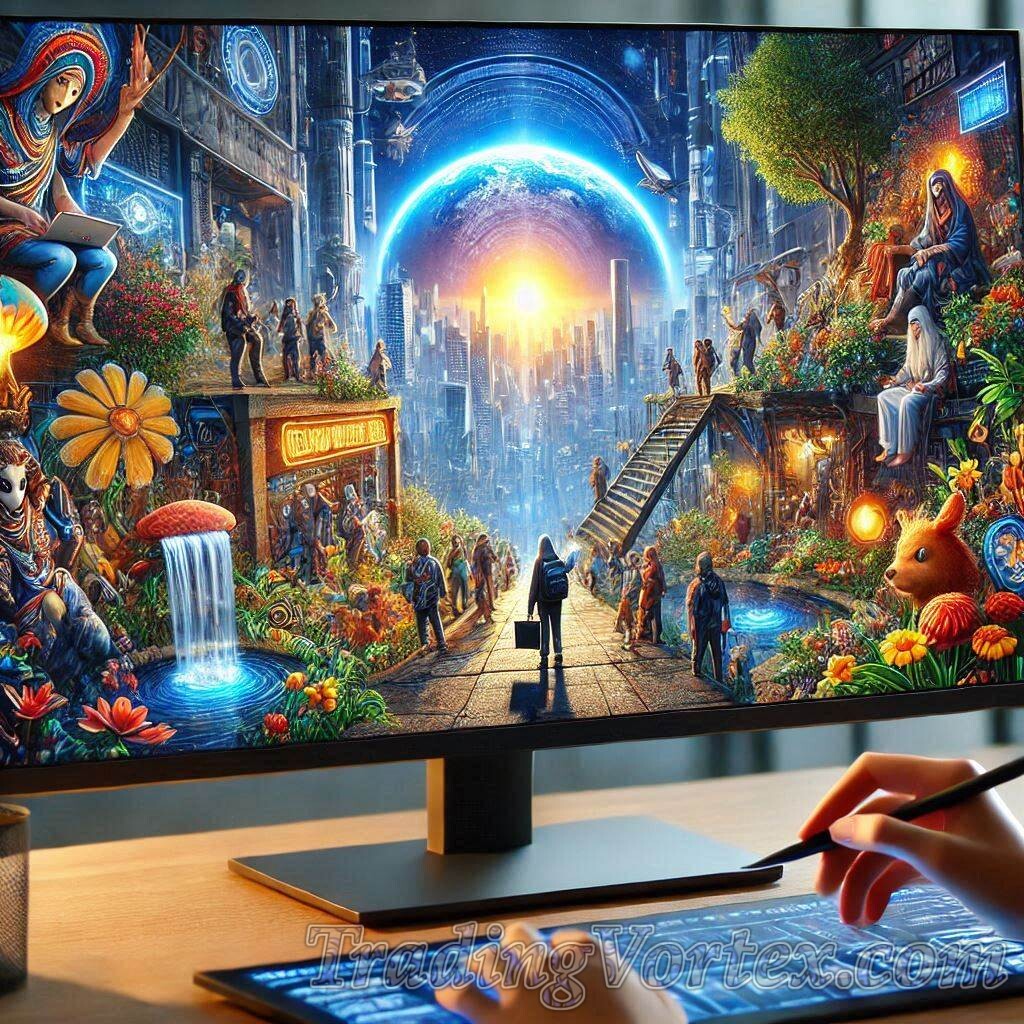
Predictions for NFT Growth in Developing Economies:
Hold onto your hats, folks! The NFT market is projected to skyrocket from approximately $27.31 billion in 2023 to a whopping $264.6 billion by 2032, growing at a compound annual growth rate (CAGR) of 28.7%.
But here's the kicker: Emerging economies are expected to be the turbo boosters of this growth. With increasing internet penetration, a young and tech-savvy population, and a burgeoning middle class, these regions are ripe for NFT adoption. For instance, countries like India and Kenya are already leveraging blockchain technology in sectors like banking, supply chains, and agriculture.
The Role of Blockchain Advancements and Policy Developments:
Blockchain isn't just the backbone of NFTs; it's the whole darn skeleton. Advancements in blockchain technology are making NFTs more accessible, secure, and scalable. Innovations are enabling the creation, management, and trading of unique digital assets, paving the way for NFTs to become a mainstream phenomenon.
Now, let's talk policy. As governments in emerging markets start to wrap their heads around NFTs, we're seeing a shift from skepticism to regulation. This regulatory clarity is crucial for fostering trust and encouraging investment. For example, the U.S. has been actively discussing policies related to NFTs, focusing on financial regulation, intellectual property rights, and consumer protection.
What’s Next for Investors, Creators, and Traders?
For investors, the future is looking bright. With the NFT market projected to reach $217 billion by 2032, there's ample opportunity for those willing to do their homework.
Creators, it's your time to shine. NFTs offer a new avenue for monetizing digital art, music, and other creative works. The transparency and immutability of blockchain ensure that creators can receive fair compensation for their work.
Traders, buckle up. The NFT market is expected to grow at a CAGR of 30.3% between 2024 and 2029. This means more liquidity and more opportunities to capitalize on market trends.
Conclusion:
In a nutshell, the future of NFTs in emerging markets is as promising as a double shot of espresso on a Monday morning. With technological advancements, supportive policies, and a growing appetite for digital assets, NFTs are set to become a cornerstone of the digital economy in these regions. So, whether you're an investor, creator, or trader, now's the time to get in on the action.
Navigating the NFT Landscape in Emerging Markets:
As we wrap up our exploration of NFTs in emerging markets, it's clear that this digital frontier is brimming with opportunities and challenges. Let's take a moment to reflect on the key takeaways and what they mean for investors and stakeholders.
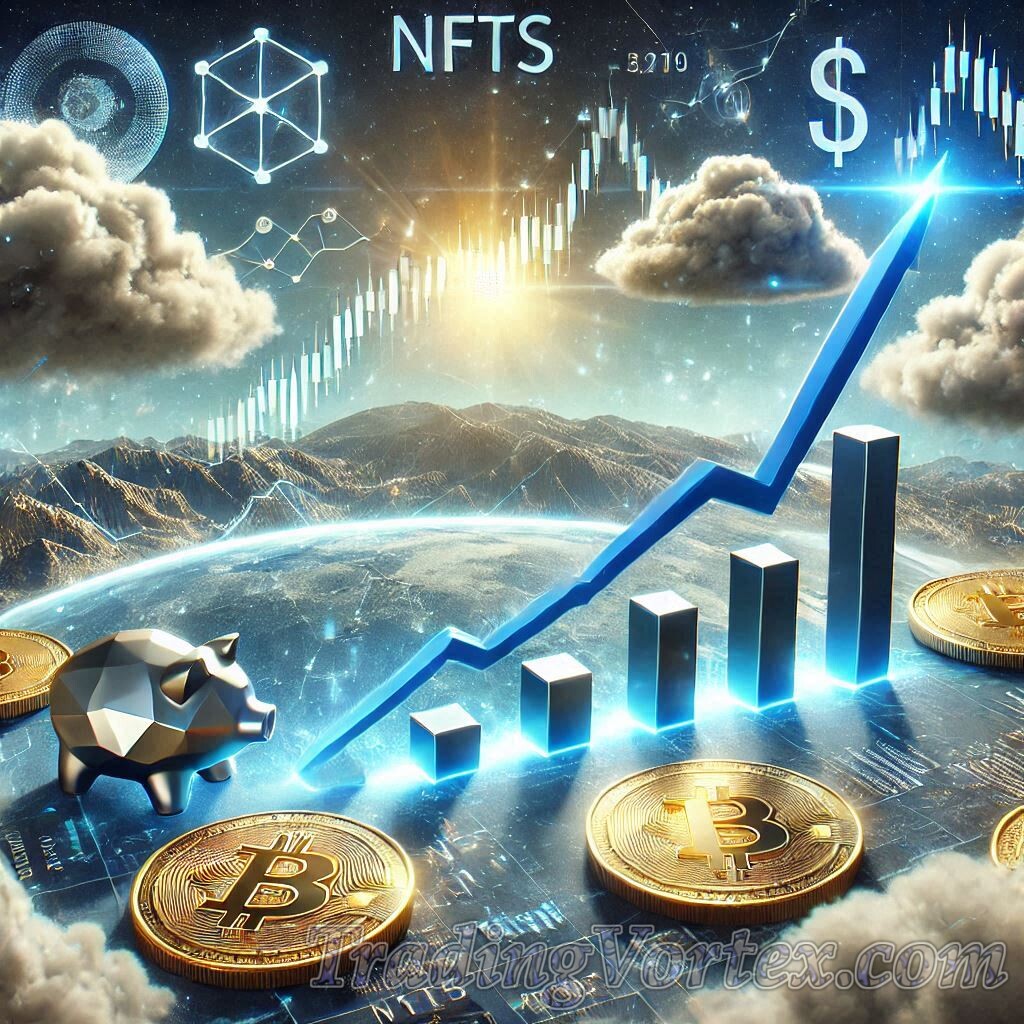
Why Emerging Markets Hold the Key to NFT Growth:
Emerging markets are not just passive participants in the NFT space; they're the engines driving its expansion. With a projected market size of approximately $27.31 billion in 2023 and an expected growth to around $264.6 billion by 2032, the NFT market is on an impressive upward trajectory.
This growth is fueled by factors like increased internet penetration, a young and tech-savvy population, and a burgeoning middle class. For instance, countries like India and Kenya are already leveraging blockchain technology in sectors like banking, supply chains, and agriculture, setting the stage for NFT adoption.
Final Takeaways for Investors and Stakeholders:
For investors and stakeholders, the NFT landscape in emerging markets offers a mix of promise and caution. While the market is projected to grow at a compound annual growth rate (CAGR) of 28.7% between 2024 and 2032, reaching a value of around $264.6 billion by 2032, it's essential to approach with due diligence.
The gaming NFT market is emerging as a key sector for NFT growth, with substantial revenue increases and an expanding user base driving innovation and growth in 2024.
However, challenges like regulatory uncertainty, accessibility issues, and market volatility persist. For example, Africa faces challenges in adopting NFTs, such as limited awareness, infrastructure limitations, economic barriers, and intellectual property concerns.
In conclusion, while the NFT market in emerging economies is ripe with potential, it's crucial to stay informed, exercise caution, and engage with the community. By doing so, investors and stakeholders can navigate this dynamic landscape and capitalize on the opportunities it presents.
Frequently Asked Questions (FAQs) on NFT Trading in Emerging Markets:
Curious about NFTs and their role in emerging markets? Let's dive into some common questions to help you navigate this exciting space.
Q1. What exactly are NFTs, and how do they work?
Non-Fungible Tokens (NFTs) are unique digital assets verified using blockchain technology. Unlike cryptocurrencies like Bitcoin, each NFT is one-of-a-kind, representing ownership of a specific item or piece of content, such as art, music, or virtual real estate.
Q2. Why are NFTs gaining popularity in emerging markets?
Emerging markets are embracing NFTs due to factors like increased internet access, a young and tech-savvy population, and a growing middle class. These regions see NFTs as a way to empower creators, preserve cultural heritage, and tap into new economic opportunities.
Q3. What are the main challenges facing NFT adoption in these regions?
While the potential is vast, challenges include:
⇒ Regulatory Uncertainty: Many countries are still developing clear guidelines for NFTs, leading to confusion and hesitation among potential users.
⇒ Infrastructure Limitations: Inadequate internet connectivity and technological infrastructure can hinder access to NFT platforms.
⇒ Economic Barriers: High transaction fees and the need for cryptocurrency can be prohibitive for some individuals.
⇒ Intellectual Property Concerns: Protecting digital creations and ensuring rightful ownership remains a complex issue.
Q4. How can investors and traders capitalize on NFT opportunities in emerging markets?
To navigate this dynamic landscape:
⇒ Stay Informed: Regularly update yourself on market trends and regulatory changes.
⇒ Diversify Investments: Consider a mix of established and emerging NFT projects to balance risk.
⇒ Engage with Communities: Participate in local NFT communities to gain insights and discover promising opportunities.
⇒ Exercise Caution: Given the volatility, approach investments with a long-term perspective and avoid speculative behavior.
Q5. Are there any success stories of NFT adoption in emerging economies?
Absolutely! For instance, in Africa, NFTs are being used to preserve cultural artifacts and empower artists. By tokenizing traditional art, creators can reach global markets, ensuring fair compensation and recognition.
Q6. What does the future hold for NFTs in these regions?
The future looks promising, with projections indicating significant growth. However, success will depend on addressing current challenges, fostering education, and developing supportive policies. As the market matures, NFTs could become a cornerstone of digital economies in emerging markets.
Remember, while NFTs offer exciting opportunities, it's essential to approach them with due diligence and a clear understanding of the risks involved.







































 TradingVortex.com® 2019 © All Rights Reserved.
TradingVortex.com® 2019 © All Rights Reserved.